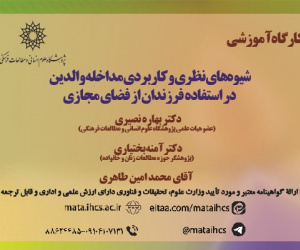رویکرد احتمالی دولت دوم ترامپ در قبال جمهوری اسلامی ایران: تحلیل و پیش بینی ها
آرشیو
چکیده
سیاست های ایالات متحده در قبال جمهوری اسلامی ایران در دوران ریاست جمهوری دونالد ترامپ تحت تأثیر رویکرد «فشار حداکثری» قرار داشت که بر اساس تحریم های اقتصادی گسترده، کاهش تعاملات دیپلماتیک و تقویت ائتلاف های ضدایرانی در سطح بین المللی استوار بود. مقاله حاضر به تحلیل و پیش بینی رویکرد احتمالی دولت دوم ترامپ می پردازد. سؤال اصلی این پژوهش آن است که با توجه به سیاست های گذشته دولت ترامپ و تحولات داخلی و بین المللی، چه رویکردهایی ممکن است از سوی دولت دوم ترامپ در قبال جمهوری اسلامی ایران اتخاذ شود؟ فرضیه اصلی مقاله این است که دولت دوم ترامپ احتمالاً سیاست های مشابه دوره اول خود را در قبال ایران، به ویژه درزمینه تحریم ها، فشار حداکثری و محدودسازی توافقات دیپلماتیک ادامه خواهد داد، اما با توّجه به شرایط جدید منطقه ای و جهانی، تغییرات استراتژیک و تاکتیکی نیز محتمل خواهد بود. این پژوهش باهدف پیش بینی رویکردهای آتی دولت ایالات متحده در قبال ایران، به بررسی جامع عوامل مؤثر بر سیاست گذاری در این حوزه می پردازد. در این راستا، سیاست های پیشین دولت آمریکا، نظرات و تحلیل های اندیشکده های تأثیرگذار بر سیاست خارجی این کشور، تحولات منطقه ای و بین المللی مرتبط، و همچنین متغیرهای داخلی ایران و ایالات متحده مورد تحلیل قرار می گیرند. روش تحقیق در این پژوهش کیفی از نوع تحلیلی، با استفاده از منابع مختلف کتابخانه ای، مقالات، سایت های اینترنتی...) است.The possible approach of the second Donald Trump administration against the Islamic Republic of Iran: analysis and predictions
The US policies against the Islamic Republic of Iran during the presidency of Donald Trump were influenced by the "maximum pressure" approach. Maximum pressure was based on extensive economic sanctions, reduced diplomatic interactions and strengthening anti-Iranian coalitions at the international level. This article analyzes and predicts the possible approach of the second Trump administration (May 2024). The main question of this realization is that, given the previous policies of the Trump administration and domestic and international developments, what approaches can the second Trump administration now pursue against the Islamic Republic of Iran? The main hypothesis of this article is that the second Trump administration will likely continue policies similar to the first administration against Iran especially in the areas of sanctions, maximum pressure and limiting diplomatic agreements but given the new regional and global conditions, strategic and tactical changes in these policies are also likely. This research aims to predict the future approaches of the US administration against Iran by comprehensively examining the factors affecting policymaking in this area. In this regard, the previous policies of the US government, the opinions and analyses of think tanks influencing the country's foreign policy, relevant regional and international developments as well as domestic variables in Iran and the US are analyzed. Here the research method is qualitative (analytical) and various library sources, articles, websites, etc are used.











